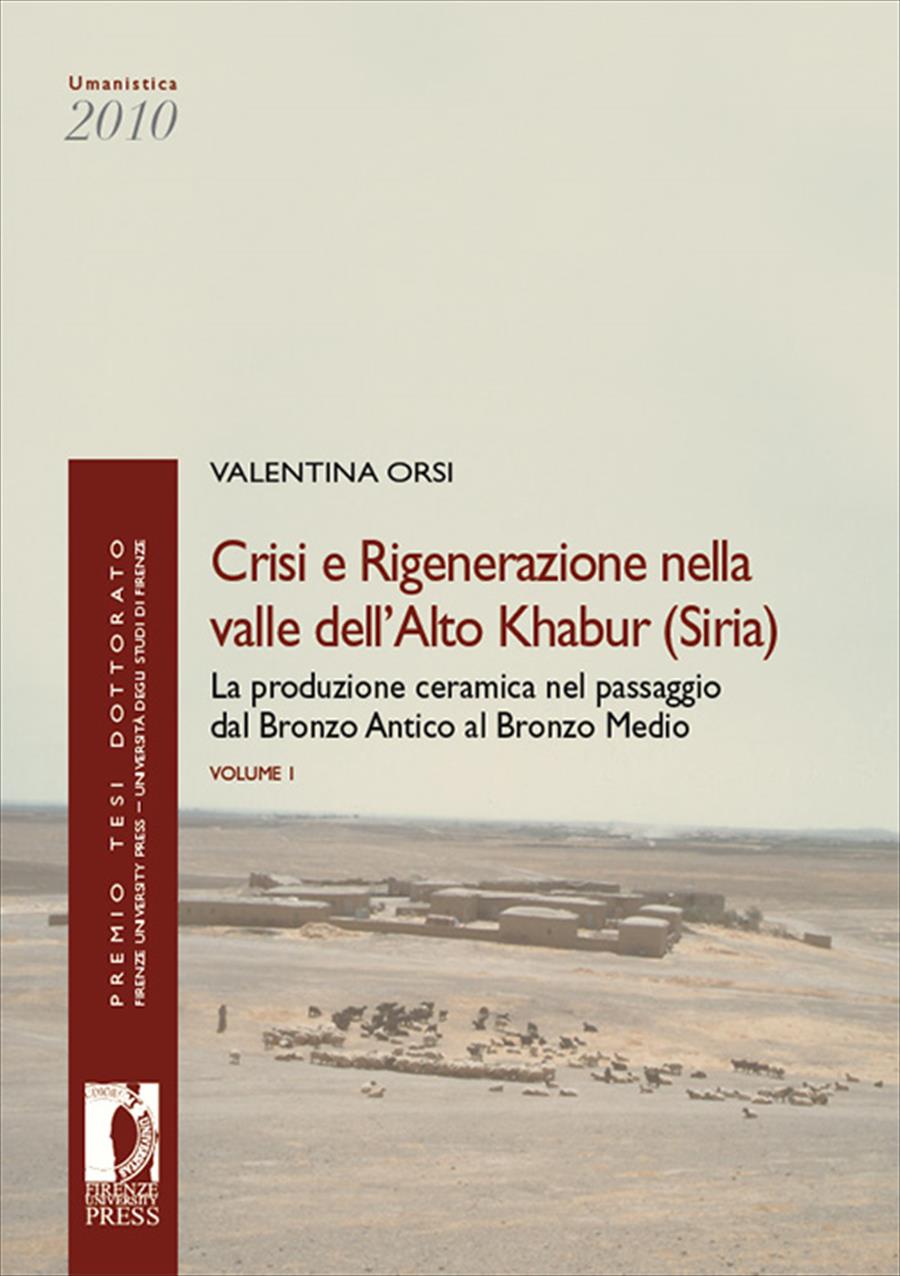Valentina Orsi
University of Florence, Italy - ORCID: 0000-0002-3657-4351

DOI: 10.36253/978-88-6655-089-1
Series: Premio Tesi di Dottorato
ISSN 2612-8039 (print) - ISSN 2612-8020 (online)
© 2011 Author(s)
Published by Firenze University Press
In
the history and archaeology of the Ancient Near East, the period
between the end of the third and the beginning of the second millennium
BC in northern Mesopotamia constitutes a 'Media Aetas', an
obscure period between the flourishing of the urban cultures of the
Ancient Bronze Age in the middle of the III millennium BC and the
development of the Amorite states of the Middle Bronze Age at the end of
the 19th century BC. The identification in the archaeological sequence
of Tell Barri, the ancient city of Kahat, of the ceramic horizon
coeval with the 'urban crisis' that preceded the diffusion of the
painted ceramic of Khabur, associated with a new phenomenon of
sedentarisation, makes it possible to redefine the chronology of events
in the region. It aso enables a delineation of the processes of
interaction between the various social realities of northern Mesopotamia
in the phase of formation that underlies the subsequent cultural
development of the II millennium BC.
Il periodo tra la fine del
III e l'inizio del II millennio a.C. in Alta Mesopotamia rappresenta
nella storia e nell'archeologia del Vicino Oriente Antico una 'Media Aetas', un'età oscura tra la fioritura delle culture urbane del Bronzo Antico a metà del III millennio a.C. e lo sviluppo degli stati amorrei del Bronzo Medio, alla fine del XIX sec. a.C.
L'identificazione nella sequenza archeologica di Tell Barri, l'antica città di Kahat,
dell'orizzonte ceramico coevo alla 'crisi urbana' che precede la
diffusione della ceramica dipinta del Khabur, associata ad un nuovo
fenomeno di sedentarizzazione, permette di ridefinire la cronologia
degli eventi nella regione, e di delineare i processi di interazione tra
le diverse realtà sociali alto mesopotamiche in quella fase formativa
che sta alla base del successivo sviluppo culturale di II millennio a.C.







No comments:
Post a Comment